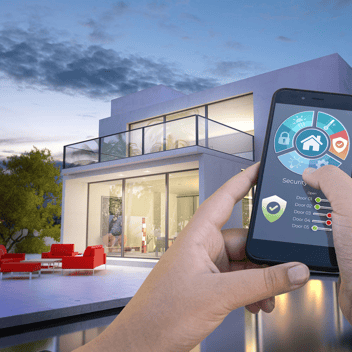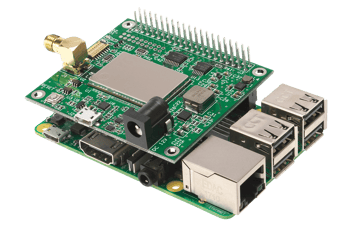Moving Beyond The Smart Home And Into Smart Buildings And Property Management With Wi-Fi HaLow
Author by Newracom
 The internet of things has not reached its full potential. There is still a long way to go for building automation for residents and property managers of high-density housing such as apartment complexes, condos, and high rises. Smart buildings face all the same challenges as the smart home and multiplied by being larger, with more people, and many more devices. All these challenges make it an ideal environment to implement 802.11ah Wi-Fi HaLow. Wi-Fi HaLow is a wireless technology standard built upon a Wi-Fi framework for IoT devices.
The internet of things has not reached its full potential. There is still a long way to go for building automation for residents and property managers of high-density housing such as apartment complexes, condos, and high rises. Smart buildings face all the same challenges as the smart home and multiplied by being larger, with more people, and many more devices. All these challenges make it an ideal environment to implement 802.11ah Wi-Fi HaLow. Wi-Fi HaLow is a wireless technology standard built upon a Wi-Fi framework for IoT devices.
Addressing the Challenges
Distance
Starting with the obvious, the larger space of these places makes standard wireless technologies like Wi-Fi, Bluetooth®, and Zigbee unable to reach without complex mesh networking. The range of 2.4 and 5 GHz frequency technologies doesn’t provide the range and propagation needed for a larger building or property.
Mesh networking is available within these standards to help extend the range, however, there are many complexities and considerations with mesh networking, where Wi-Fi HaLow could easily address the distance from a single access point. A large challenge with mesh is considering the additional latency based upon the number of hops and the introduction of multiple points of failure with end nodes that connect devices at the edge of a mesh network.
Increased Number of End Devices
Larger areas and larger buildings mean more end devices, but Wi-Fi HaLow is up to the challenge. See our 1000+ end device demo as proof of concept and how quickly it can send data to the entire network of devices. The number of smart door locks, smoke detectors, and other end devices that make up an apartment complex or high-rise building would overwhelm other wireless technologies. Popular mesh networks like Bluetooth Low Energy currently can only handle a number of devices in the low 100s. This limitation is due to the number of different hops data must make through a mesh network, slowing down data throughput to a standstill.
With the growing number of IoT applications for access control, HVAC, lighting, and security of apartment complexes, a network capacity in the low 100s is likely not enough to support a large or even medium-sized apartment complex. Smart building apartments may start with one device per unit, but if you are aiming for a truly realized smart living space with access control, thermostats, appliances, lights, and other smart devices you may end up with well over 10 smart devices per unit. Not to mention the other challenges that this number of devices would bring to other 2.4 GHz networks in terms of channel congestion and the amount of interference.
Avoid Wireless Interference With Wi-Fi HaLow’s Sub–GHz Frequency Range
The other advantage 802.11ah has over the 802.15.4 wireless technologies (Bluetooth, ZigBee, Z-Wave) is that HaLow is on a different frequency range than almost all consumer devices. The average person in North America will have more than 13 wireless devices by 2023. Most of these consumer devices operate in the 2.4 GHz or 5 GHz frequency range. To avoid skipping a beat in your streaming music or constant buffering streaming videos, all caused by interference in the crowded 2.4Ghz band, using a separate frequency for all of your IoT sensors and controls will be necessary. Now turning lights on and off, lowering power shades, checking the camera at the front gate, or just adjusting the wireless thermostat will not interfere.
802.11ah Wi-Fi HaLow utilizes the sub-GHz ISM bands that are different from popular wireless frequency channels used by most consumer devices. Thus, minimizing the potential of interference, and minimizing the potential to cause interference.
Where Other Long Range LPWANs Come Short
Well, what about using other popular long-distance, sub-GHz wireless technologies? They would cover the range, and minimize the potential of interference, but do you want to be limited to just bits of data? Wi-Fi HaLow is the only Long Range LPWAN that has a throughput that is measured in megabits.
While doors, alarms, and lights may only need a low data rate for most use cases, imagine having to perform a critical vulnerability security patch over LoRa or Sigfox network, possibly rendering your access control inoperable for hours. Wi-Fi HaLow is over 2000 times faster throughput than LoRa.
With this data speed, Wi-Fi HaLow can include devices on the network that just would not be feasible with other sub-GHz WANs. Your IoT network can now include cameras, smart appliances, and real-time remote activation of security activation. SigFox and LoRa don’t have many capabilities beyond a sensor network. To truly get to a fully realized smart building that can react to real-time triggers, latency must be low and data speeds need to be much higher. Facial recognition access controls using only battery-powered devices would be possible with Wi-Fi HaLow. Getting location data and receiving a video feed from your onsite golf carts would be possible. Wi-Fi HaLow data throughput takes off the limitations of our IoT networks today.
Lower Cost and Lower Power Than Cellular
While Cellular can handle the range and is on a different frequency, it has monthly subscriptions. And if you want high data throughput IoT devices, the ongoing monthly costs will be high. Wi-Fi HaLow follows the same architecture as standard Wi-Fi, with one AP, connecting over 1000s devices wirelessly without effort. There is no reason to pay a monthly connection cost on something that isn’t moving.
Wi-Fi HaLow has higher data rates over cellular IoT standards such as NB-IoT and Cat-M1. Only LTE and 5G offer faster data speeds than HaLow. 802.11ah also has a wide range for even mobile endpoints that stay in a defined area. High-value portable assets like golf carts, power tools, and speakers could all be tracked via Wi-Fi HaLow and GPS instead of cellular. Cellular offers data throughput and roaming freedom but only at a reoccurring cost.
The other issue is for remote battery-operated sensors is battery life compared to LPWANs. Wi-Fi HaLow has many features for long battery life to help maximize mobile devices in the field. For coin battery-operated sensors, even low-power cellular IoT standards cause more power consumption than all long-range LPWANs designed for the long-term field operation of battery-powered devices. Wi-Fi HaLow shines for extending battery life for sensors that send frequent or large messages due to shorter transmit times.
Why Wi-Fi HaLow Fits The Need For Smart Property Management And Smart Buildings
The signal distance, the data throughput, high client count, and low power consumption make Wi-Fi HaLow the ideal solution for smart buildings. With a range of over a kilometer or 3000 feet, data speeds of from 150 kbps up to 80 Mbps, able to handle up to 8000 clients, combined with low power consumption make an ideal IoT network for large buildings and housing complexes. Wi-Fi HaLow is a Wi-Fi technology designed for IoT.
Even the details make it an easy choice for use. Wi-Fi HaLow uses the latest Wi-Fi security with WPA3 security protocols. This helps ensure your end devices and access points are secure and keep your data safe. Then it has the same simple architecture and capabilities of Wi-Fi that most everyone is familiar with making it simple to deploy and set up. Due to its Sub-1 GHz spectrum operation, it can send signals through walls and obstacles better than most other IoT wireless technology. Lastly, it is a non-proprietary technology meaning anyone can develop Wi-Fi HaLow solutions.
Are you Intrigued? Reach out to our team at Sales@Newracom.com or get the latest information about Wi-Fi HaLow with our Monthly Newsletter.



